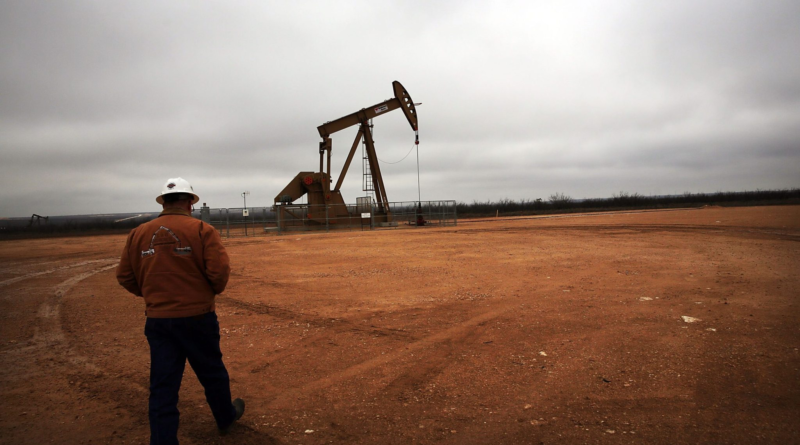AI boom drives shares of sleepy Texas land firm up 200%
The newest addition to the S&P 500 may be a relic of the Wild West, but its skyrocketing valuation is a byproduct of the AI boom. Founded in 1888, the Texas Pacific Land Corporation is a company that has just 100 employees but a market capitalization of more than $35 billion. For comparison, American Airlines, based in nearby Fort Worth, employs over 100,000 people and is worth roughly $10 billion.
Texas Pacific Land Corporation, or TPL, began as a land trust but found itself sitting on “black gold” soon after oil was discovered in West Texas during the early 1900s. Recently, the company has begun exploring other ways to make money from its 873,000 acres, an area larger than Yosemite National Park. Betting that the region’s dirt-cheap natural gas will be a draw for America’s tech giants, TPL is luring renewable power projects, bitcoin mines, and utility-scale battery production.
Then there’s the possibility of data centers, which has helped TPL nearly triple its stock price in the past year. It remains to be seen whether the centers will become a fixture of the Permian Basin like oil pumps, but there’s no shortage of investor hype for companies that could capitalize on the energy boom needed to power the AI revolution.
“TPL just has a lot of positive attributes for data centers, and nobody has more land than us in West Texas,” CEO Tyler Glover said on the company’s earnings call earlier this month.
The company declined to provide further comment for a Bloomberg report on its data ambitions, but Glover said on the earnings call he believes TPL is well positioned to fill the need for land and water services as artificial intelligence opportunities unfold.
“If we need to buy more land to accommodate a data center, then we’ve proven that’s not hard for us to do,” he said. “I think there’s also a lot of other parts of the country that are also attractive for data centers, so we’re working hard to make TPL as attractive as possible.”
Why Big Tech might need West Texas natural gas
The bullish sentiment around TPL’s data ambitions is unsurprising given how Big Tech’s CapEx train doesn’t appear to be slowing anytime soon. According to data from Bloomberg Intelligence, Google-parent Alphabet, Microsoft, Amazon, and Facebook-parent Meta may spend more than a combined $200 billion next year amid the AI arms race. That means data center power demand in the U.S. could grow roughly 160% by 2030, according to Goldman Sachs, accounting for nearly a tenth of the country’s energy usage.
“That kind of spike in power demand hasn’t been seen in the U.S. since the early years of this century,” the bank’s report said.
This has prompted plenty of concerns about carbon emissions, and investors have joined the tech giants in trying to think ahead. With Big Tech beginning to ink deals for nuclear power, the top-ten performers in the S&P 500 this year include providers like Vistra (first), GE Vernova (fourth), and Constellation Energy (ninth), per Slickcharts.
Demand for natural gas, often dubbed the world’s “cleanest fossil fuel,” also seems set to surge. It’s cheapest in West Texas, where a supply glut has caused prices to turn negative at the Waha Hub near the Permian Basin dozens of times this year.
Managing overproduction is not an issue for TPL, which collected almost $100 million in oil and gas royalties last quarter from the likes of Exxon Mobil, Chevron, and ConocoPhillips while not paying anything to operate the actual wells. It’s no wonder investors have also flocked to fellow West Texas landowner Landbridge, which has seen its shares surge more than threefold since going public in June.
Landbridge’s footprint in the Permian Basin is less than a third of that of TPL’s, however. The latter’s stock jumped 14% on Friday after the announcement that TPL would replace Marathon Oil, which has been acquired by ConocoPhillips, in the S&P 500. (TPL’s shares have shed much of that gain early this week, with the stock falling over 10% to trade around the $1,550 mark.)
On a broader level, TPL’s newfound data ambitions punctuate the company’s remarkable evolution from a land-sale vehicle created to repay bondholders following the bankruptcy of Texas and Pacific Railway Co., which unsuccessfully tried to connect East Texas and San Diego. In time, the company would trade on the New York Stock Exchange in 1927 and, thanks to its lean operations and stock repurchases, would become a favorite of a young Warren Buffett.
Today, unlike the value-first thesis of the Oracle of Omaha, many of TPL’s shareholders are seeking massive growth.



